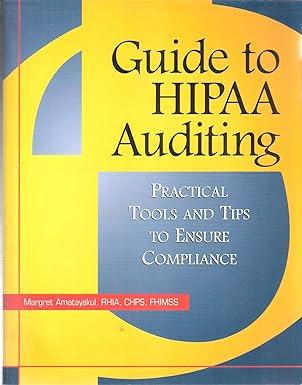Question
The stockholders equity accounts of Concord Corporation on January 1, 2017, were as follows. Preferred Stock (6%, $100 par noncumulative, 5,000 shares authorized) $300,000 Common
The stockholders equity accounts of Concord Corporation on January 1, 2017, were as follows. Preferred Stock (6%, $100 par noncumulative, 5,000 shares authorized) $300,000 Common Stock ($4 stated value, 300,000 shares authorized) 1,000,000 Paid-in Capital in Excess of Par ValuePreferred Stock 15,000 Paid-in Capital in Excess of Stated ValueCommon Stock 480,000 Retained Earnings 705,000 Treasury Stock (5,000 common shares) 40,000 During 2017, the corporation had the following transactions and events pertaining to its stockholders equity. Feb. 1 Issued 5,000 shares of common stock for $30,000. Mar. 20 Purchased 1,000 additional shares of common treasury stock at $9 per share. Oct. 1 Declared a 6% cash dividend on preferred stock, payable November 1. Nov. 1 Paid the dividend declared on October 1. Dec. 1 Declared a $0.65 per share cash dividend to common stockholders of record on December 15, payable December 31, 2017. Dec. 31 Determined that net income for the year was $283,200. Paid the dividend declared on December 1.
1. Journalize the transactions. (Include entries to close net income and dividends to Retained Earnings.) (Account title and explanation, debit and credit column)
2. Enter the beginning balances in the accounts and post the journal entries to the stockholders equity accounts. The accounts include: preferred stock, common stock, paid in capital in excess of par value - preferred stock, paid in capital in excess of par value - common stock, retained earnings, cash dividends, and treasury stock. (date, amount, and debit or credit needed!)
3. Prepare the stockholders equity section of the balance sheet at December 31, 2017.
List of accounts: Accounts Payable Accounts Receivable Accumulated Depreciation-Buildings Accumulated Depreciation-Equipment Accumulated Other Comprehensive Income Accumulated Other Comprehensive Loss Allowance for Doubtful Accounts Bad Debt Expense Buildings Cash Cash Dividends Common Stock Common Stock Dividends Distributable Depreciation Expense Dividends Dividends Payable Equipment Income Summary Income Tax Expense Income Taxes Payable Insurance Expense Interest Expense Interest Payable Inventory Land Loss on Disposal of Plant Assets Miscellaneous Expense No Entry Notes Payable Other Operating Expenses Paid-in Capital in Excess of Par Value-Common Stock Paid-in Capital in Excess of Par Value-Preferred Stock Paid-in Capital in Excess of Stated Value-Common Stock Preferred Stock Prepaid Expenses Prepaid Insurance Retained Earnings Salaries and Wages Expense Salaries and Wages Payable Service Revenue Stock Dividends Supplies Supplies Expense Treasury Stock Unearned Service Revenue Utilities Expense
4. Calculate the payout ratio, earnings per share, and return on common stockholders equity. (Round earning per share to 2 decimal places, e.g. $2.66 and all other answers to 1 decimal place. 17.5%.)
Step by Step Solution
There are 3 Steps involved in it
Step: 1

Get Instant Access to Expert-Tailored Solutions
See step-by-step solutions with expert insights and AI powered tools for academic success
Step: 2

Step: 3

Ace Your Homework with AI
Get the answers you need in no time with our AI-driven, step-by-step assistance
Get Started


